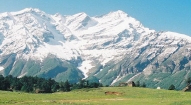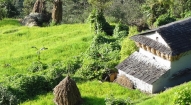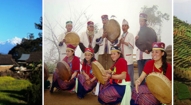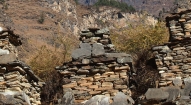- Home |
- Why With Us |
- About Us |
- Booking |
- Contact Us |
- Site Map
- Home
-
Nepal
-
Trekking
- Arun Valley with Gokyo Lakes
- Everest Base Camp Trek
- Everest- A Living Culture Exploration
- Everest Explore
- Everest Base Camp (via Thame) Trek
- Everest Base Camp with Kala Patthar
- Everest Comfort Trek
- Everest High Passes with Ama Dablam Base Camp
- Everest Mani Rimdu Festival Trek
- Everest Nagpa La Trek
- Everest with three high passes
- Gokyo Ri, Chola Pass & Chukung Ri with Kala Patthar
- Gokyo with Everest Base Camp
- Jomsom - Muktinath
- Jomsom - Muktinath
- Khayar Lake Trek
- Manaslu and Tsum Valley with Larkya La
- Upper Mustang Trek
- Manaslu High Circuit
- Manaslu, Tilicho Pass & Upper Mustang
- Annapurna Base Camp Trek
- The Annapurna Circuit Trek
- Annapurna Panorama
- Nar and Phu Valley Trekking
- Nepal Rhododendron Trek
- Royal Trek
- Saribung Trek and Expedition
- Annapurna Sanctuary Trek
- The Annapurna Sunrise Trek
- Expedition
-
Rafting
-
Peak Climbing
-
Tours
- Kathmandu-Chitwan-Jungle Tour with visit to Pokhara
- Dawn to Dusk Tour
- Historical, Natural & Cultural Tour with Camping
- Kathmandu Valley Temple Tour
- Temple - Panorama - Jungle Tour
- Taste of Nepal
- Central Nepal Tour
- Explore Nepal Tour & Trek
- Nepal Cross-country Tour
- Best of Nepal Tour & Treks
- Kathmandu valley rim Tour & Treks
- Nepal Culture Tour
- Introduction to Nepal Tour & Treks
- Nepal at a glance Tour & Treks
- Wonders of Nepal Tour & Treks
- Glimpses of Nepal Tour & Treks
- Through the Silhouette Tour & Treks
- Tent and Temple Tour
- Kathmandu-Chitwan-Pokhara Tour
- Historical, Cultural City and Jungle Tour
- Nepal Wildlife Tour
- Nepal Panorama Historical Tour
- Nepal Adventure Tour
- Nepal Pilgrimage Tour
- Ghalegaun-Ghanapokhara Homestay Tour
- Jungle Safari
- Adventure Sports
-
Trekking
- Tibet
-
Bhutan
-
India
- Yoga Tour
- About Us
-
The Great Himalayan Trail
-
Short Tours/Treks


Off the Beaten Path Treks
Five most popular off-the-beaten-path treks in Nepal
Naar and Phu
At the village of Koto, four days into the Annapurna Circuit trail, a river branches north through an amazing narrow, wooded gorge squeezing between sheer cliffs on a path which at times is hewn deeply into the rock. One part of the trail even passes underneath a waterfall. A day of walking through this magnificent corridor brings you out onto the desert landscape of the Tibetan plateau at the foot of Kangguru, a 7000m dome of snow, and it feels like you’ve crossed the Himalayan divide. This is the restricted area of Naar and Phu, close to Nepal’s northern border with Tibet, speckled with abandoned Khampa settlements. Two mediaeval villages can be found here, and walking through them feels like stepping back in time. North is Phu, with its peaceful monastery sitting on a hill above the village, and west is Naar, nestling underneath the north face of Pisang Peak. Three or four days of exploring in this remote region are guaranteed to relax the mind, and to cap it all off you can cross the 5322m Kang La pass back onto the Annapurna Circuit, and see the entire northern sweep of the Annapurnas, arguably the finest view in the Himalayas.
The Hongu Valley
Between the popular Khumbu trekking peaks of Mera Peak and Island Peak is one of the loveliest valleys in Nepal, the Hongu. In three amazing days of walking you can hike through rhododendron clad high altitude hillsides, pass a lake with a large sandy beach, wander through snow-laden Scottish moorland, pass a wide pebble-dashed plain formed by the Hongu river, admire the white walls of Kali Himal and Baruntse across the valley, look up at the black cliffs and icy summit of hemispherical Chamlang thousands of metres above, be awestruck by the massive black rock wall of Lhotse at the top end of the valley, with Everest peeping out behind it, and arrive at the glacier lakes of Panch Pokhari underneath the Amphu Labtse pass. The pass itself is one for climbers, involving ice climbing, rock scrambling and an abseil down the other side. What a fantastic place, and if you’re lucky you may not see a single other trekker.
Tamang Heritage Trail
An easy day’s bus drive north of Kathmandu is a quiet corner of the Himalayas involving a week’s worth of easy, relatively low altitude trekking among lush green valleys and hillsides. The Tamang Heritage Trail is beginning to develop as a tourist trek with a difference. Instead of tea house accommodation, like on the Annapurna Circuit and Everest Base Camp treks, this one specializes in homestay accommodation, an opportunity to stay with a family in a typical stone and wood carved cottage with communal kitchen, dining room and sleeping areas. Other highlights are the peaceful Hindu lake of Parvati Kund, the elaborately carved and painted houses of Gatlang, hot springs in Tatopani, and the viewpoint at Nagthali, looking out across the mountains of Langtang. If you want to extend your trek you can even walk back to Kathmandu via the sacred lakes of Gosainkund and terraced hillsides of Helambu.
Manaslu Circuit
Running parallel to the Annapurna Circuit’s Marsyangdi valley, the Manaslu Circuit’s Budhi Gandaki gorge is a far narrower and dramatic river valley, at times converging to just a few metres wide as steep wooded cliffs rise up on either side. Many parts of the trail are hewn into cliff faces and climb high above the valley floor on remarkable rock staircases. It starts off at low altitude, 600m in Arughat, and rises through different climate zones to a high pass, the Larkye La at 5160m, before dropping back down again as it circles 8163m Manaslu through Buddhist country of stupas, gompas and prayer walls.
There is much in common with the Annapurna Circuit, too. It also starts off at low altitude, 600m in Arughat, and rises through different climate zones to a high pass, the Larkye La at 5160m, before dropping back down again as it circles one of Nepal’s handful of 8000m peaks. It even follows part of the route of the Annapurna Circuit when it reaches the village of Dharapani and follows the Marsyangdi River in reverse for the last couple of days. Like the Annapurna Circuit it starts in the Hindu lowlands and passes the stupas, gompas and prayer walls of Buddhist country as it crosses the Himalayan divide.
Makalu Base Camp Trek
Another trek which begins almost at sea level before rising through climate zones until you stand right underneath one of the highest mountains on earth, the Makalu Base Camp trek is a tough one, but thoroughly rewarding, and Makalu is a staggering, terrifying mountain to gaze up and contemplate if you’re a mountaineer. The trail begins at Tumlingtar at 400m, rises up through a ridge of rice terraces, drops again to cross the warm and humid Arun valley, then passes through bamboo forest, rhododendron forest, juniper clad moorland, and over a couple of high passes before arriving in the very different Barun valley to continue its journey to base camp. The Barun valley part of the trail begins in pleasant green meadows, but quickly rises into an alpine zone of long ridges of lateral moraine.
This is a camping trek, but there are a couple of tea houses at base camp, where you can give yourself neck ache staring up at the black rock of Makalu nearly four vertical kilometres above you. It’s also worth boulder hopping up the Barun Glacier for an extra day beyond base camp to see the eastern side of Everest, a view of the world’s highest mountain that few people get to gaze upon.
Api Peak Trekking
 Often referred to as Nepal’s Wild West, the Api Himal area lies in the extreme north-western corner of Nepal, close to the border with both Tibet and India....
Often referred to as Nepal’s Wild West, the Api Himal area lies in the extreme north-western corner of Nepal, close to the border with both Tibet and India....
Read MoreNumber Cheese Circuit
 Nepal’s Newly Opened Trekking Trail in the lap of Everest and Rolwaling Region. If you plan to continue along the Everest trail, the Numbur Cheese Circuit provides excellent option for acclimatization. Ex...
Nepal’s Newly Opened Trekking Trail in the lap of Everest and Rolwaling Region. If you plan to continue along the Everest trail, the Numbur Cheese Circuit provides excellent option for acclimatization. Ex...
Read MoreThe Indigenous Peoples Trail Trek
 Falling entirely on the Mahabharat range, the IP Trail mainly offers local Home-stay accommodation providing trekkers with a rare opportunity to experience- the first of its kind in Nepal- the culture and lifestyle of si...
Falling entirely on the Mahabharat range, the IP Trail mainly offers local Home-stay accommodation providing trekkers with a rare opportunity to experience- the first of its kind in Nepal- the culture and lifestyle of si...
Read MoreTsum Valley Trekking
 Situated in the Northern part of Nepal’s Gorkha district, the Tsum valley is a sacred Himalayan Pilgrimage site and is often referred as the hidden valley of happiness in the sacred Buddhist texts. Beginning on the...
Situated in the Northern part of Nepal’s Gorkha district, the Tsum valley is a sacred Himalayan Pilgrimage site and is often referred as the hidden valley of happiness in the sacred Buddhist texts. Beginning on the...
Read More
Trekking in Nepal
Expeditions In Nepal
Rafting in Nepal
Tours in Nepal
All rights reserved.


